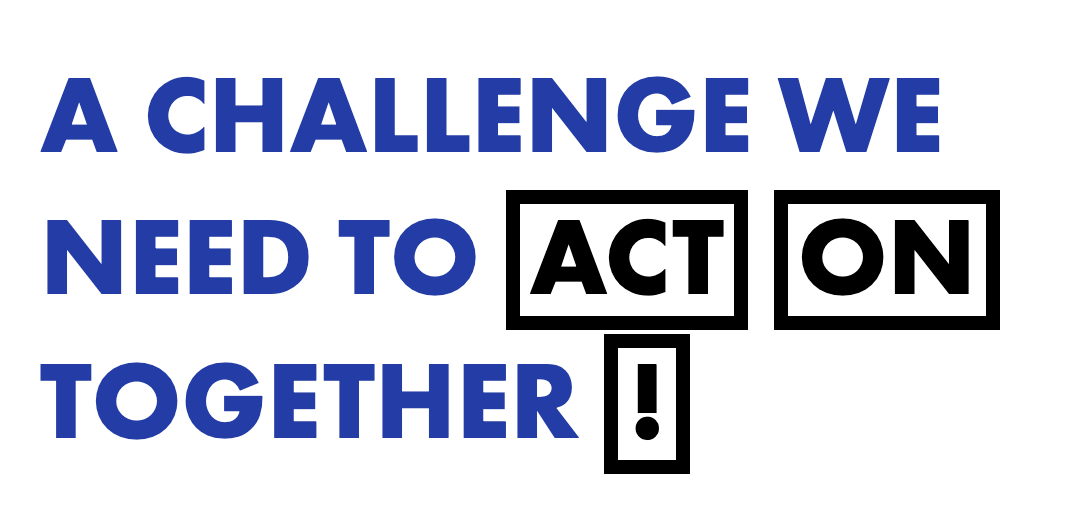When words become actions: diversity pledges vs. cultural truths

The old adage “actions speak louder than words” appears in nearly every culture throughout history, and CEOs are taking note while they try to build more inclusive workplaces. As headlines about massive employee walkouts, frequent CEO ousters, and gender-focused board shakeups increasingly take over the news, they can hardly afford to do nothing.
Since 2017, more than 700 CEOs have signed the prominent CEO Action for Diversity & Inclusion pledge, promising to do better on the D&I front. Yet despite the signatures of their CEOs, Textio has found that many of these companies still exhibit strong linguistic bias in recruiting and hiring content, some use language that hardly sounds inclusive, and only a few have even articulated why diversity is good for their business.

Promises are only made of words, and are easily broken. But the CEO Action pledge is intended to result in actionable programs: unconscious bias trainings, sponsorships and mentorships for underrepresented groups, and sharing of successful or unsuccessful practices.
Research studies have shown over and over again that more diverse workplace cultures make for more successful businesses. But very little proof has been found that the typical diversity “fixes,” like unconscious bias training, have any impact at all when it comes to changing a company’s underlying monoculture, which tends to always hire and promote the same types of people. Often, the usual programs even backfire.
Words and actions don’t have to be at odds — it just depends on where you look to find the truest signal. Making a promise is a great start, but the real action happens in the words a company uses to do business every single day. Those words are a clear window into how committed your company is to your CEO’s pledge.
When words are actions
“Fine words butter no parsnips.” — English proverb
Linguists know that words can incite direct action. They refer to sentences as “speech acts.” If you want buttered parsnips, you’ll ask your friend across the table to “pass the parsnips.” And all but the most disagreeable friends will get them to you.
Words also lead to social change. In the nineteenth century, middle-class Brits wrote countless treatises on the best way to raise upstanding offspring. All those words and rhetorical handwringing is why a century later, we shuttle five-year-olds to kindergarten to learn the names of colors, instead of keeping them around to help with the housework. We have the Victorians to thank for that growing pile of tiny socks and no tiny hands to fold them.
The CEO Action pledge is trying to trigger long-term social change. But it’s not in grand public announcements from the CEO that they’re going to “do something” that you see what a company really values. It’s in the thousands of documents that employees write every day, slapped together, unscrutinized, used and reused.
The business case behind equal opportunity
“All talk, and nothing behind it” — German proverb
Textio looked at the careers pages and job descriptions of more than 60 companies who signed this pledge to see what their words reveal. Despite “CEO Action,” very few companies care enough to make diversity a part of their bottom line.
“Simply put, organizations with diverse teams perform better.” — CEO Action Pledge website
If you care about inclusive workplaces, an equal opportunity statement seems like a minimum requirement. Unfortunately, only 74% of the companies even had a recognizable EOE statement. And of those that did, the quality was…mixed.

Some were little more than a checkbox (“McKinsey & Company is an equal opportunity employer”). Others didn’t seem like they were meant for humans to read, they simply block out identity groups between slashes (EQUAL OPPORTUNITY EMPLOYER MINORITIES/WOMEN/VETERANS/DISABLED). Nearly half read like they were drafted by the legal team rather than someone who cares about building a team.
But a few made their EOE statements outstanding. These companies articulated why diversity and inclusion is important for their business and their values.
Compare The Hershey Company’s wordy policy addendum and Cisco’s statement. Cisco has enshrined diversity as a business goal and key value.

When companies add diversity statements as canned legalese, it says to the candidate “the attorney told me to put it here.” Diversity and inclusion in the workplace shouldn’t be a court case, or worse, a charity case.
The strongest EOEs make it a business case.
The difference between McKinsey’s one-liner and Cisco’s value statement is effort. Clearly, behind these words are actions. Someone at Cisco took diversity seriously enough to translate a basic EEO blurb to something that has kindness and power in it. You don’t have to be looking for a job at either company to see which one rings truer.
Unconscious words, unconscious practices
“All talk, no practice” — Chinese proverb
The equal opportunity statement is written explicitly to express the values of your organization, but it’s the words that you didn’t mean to spread that provide the clearest signal into your cultural values
Across the 65 companies Textio observed, many companies’ job posts have a distinctive linguistic fingerprint.

It should come as no surprise to its customers that supply chain superpower WalMart usesenforces and dictates at least 5 times and 3 times more, respectively, than any other company. Meanwhile, flat-pack furniture innovator IKEA talks about care for and beautiful instead. Although these companies are both pledge signers and well-known retailers, the words they use indicate that their workplace dynamics probably have nothing in common.
Under Armour’s CEO may have come out in support of diversity back in 2017, but the company’s demeaning business practices surfaced the next year. That culture remains in the masculine-biased language including using whatever it takes 30 times more than other signers, and disciplining 8 times more of their jobs even now. Investors have taken notice of its poor governance, while their competitors steal market share.
These words show up again and again because your employees continue to use them. Actions are not only big pushes, they’re habits. Until you break the bad habit, inclusion will always be an initiative, never a reflex.
Inclusivity in leadership is more than a pledge
“A mirror of a person is their work, not their words” — Turkish Proverb
Despite the CEO Action pledge’s best intentions to reduce unconscious bias with trainings and workshops, leadership is still about men.

Bank of America’s CEO, Brian Moynihan, is a public champion of women’s leadership, but the bank’s job posts don’t reflect that. More than half of their jobs with titles containing “assistant,” “junior,” “coordinator,” or “clerk” are feminine biased. Less than a quarter of jobs containing “lead,” “senior,” “manager,” or “director” statistically attract more women to apply.
Despite their campaign to inspire women leaders, Mercedes-Benz falls into the same trap. Only 23% of their support roles are written to statistically attract more men, while 46% of their leaderships positions are biased toward them.
The first step to building a more equitable workplace is inviting people to a seat at the table when they have been left out. Without them, best practices are only theory.
Closing the loop from words to action
“There’s an ocean between saying and doing” — Italian Proverb
CEOs across America are trying to make the workplace better for everyone. It’s a valuable goal, but impossible if you can’t get underrepresented groups in the door. Biased job posts and uncommitted commitments to equity undermine the diversity of your applicant pool and tell a different story of what you value.
Like signing a pledge, words are simply a signpost. What you do with both diversity pledges and words make all the difference.
In the age of augmented writing, there is no longer an ocean between the words you see and the actions you take. If you knew the impact of your words as you wrote them, how could you not do something?
A word about the dataset — Textio measured the language of 428,746 job posts published in the last six months, across 65 brands that signed the CEO Action for Diversity and Inclusion pledge. Of the companies specifically mentioned in this article, Cisco is a current Textio customer. The rest are not.